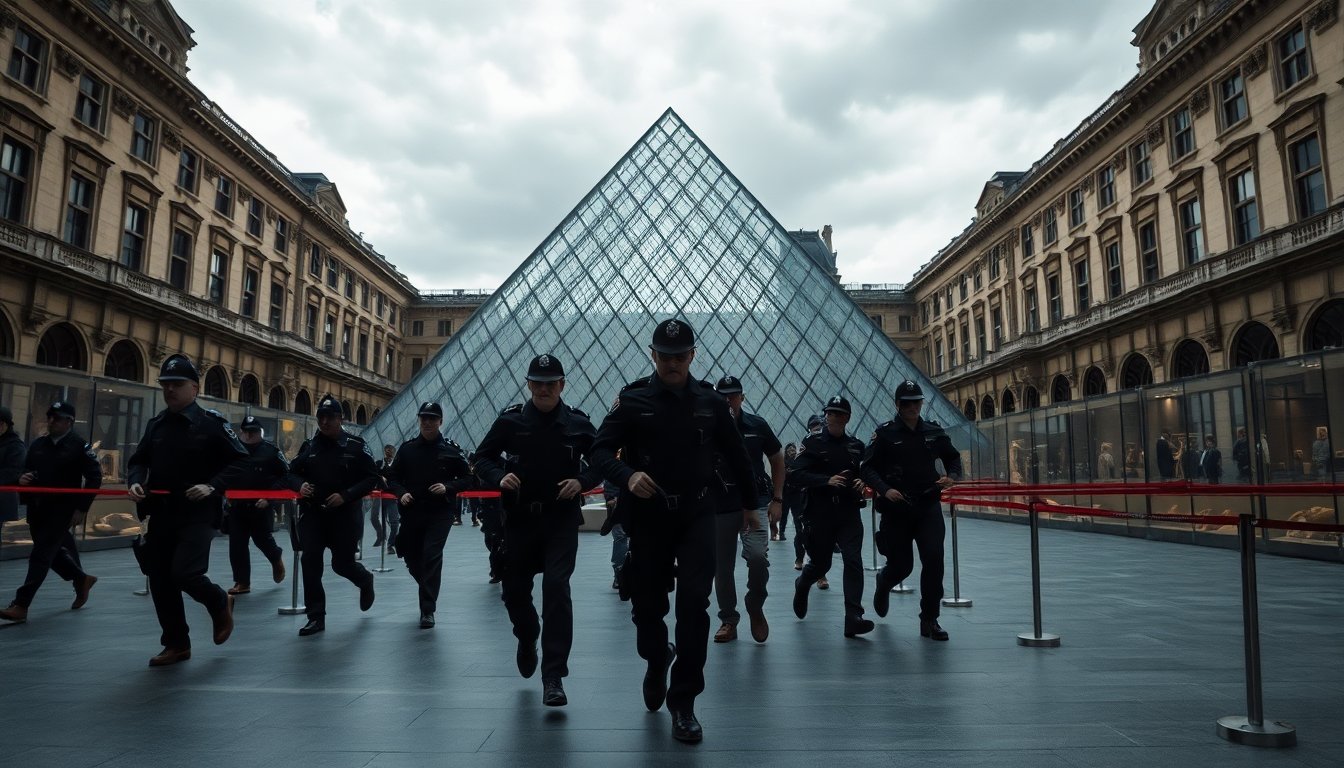Table of Contents
The Louvre Museum in Paris, a global symbol of art and culture, is grappling with the aftermath of a significant robbery that has stripped it of some of its most prized artifacts. In a carefully orchestrated theft, criminals used modern tools and clever tactics to breach the museum’s defenses, raising alarm about security at such a renowned institution.
Law enforcement officials report that the entire operation took place in a remarkably short timeframe of seven minutes. The thieves, demonstrating both skill and boldness, utilized a portable elevator in conjunction with an angle grinder to access a window. This incident has not only incited anger but also triggered a dialogue about the vulnerabilities of security systems in high-profile museums.
The heist unveiled
Details surrounding the robbery reveal a well-thought-out plan that seems almost cinematic. Eyewitness accounts suggest that the criminals arrived at the museum in the early hours when foot traffic was minimal. They utilized a portable elevator to reach a less accessible window, which they compromised with an angle grinder. This industrial tool enabled them to cut through the glass quickly and efficiently.
Upon entering, the thieves acted swiftly, targeting royal artifacts that had been on display. The selection of stolen items reflects a deliberate strategy to acquire pieces of immense historical and cultural significance. Each artifact taken represents centuries of history, making their absence from the Louvre a loss not only for the museum but for the global community.
Security implications
This audacious act has raised urgent questions regarding the security measures currently implemented at the Louvre. Despite being one of the most visited museums worldwide, the incident highlighted potential weaknesses in safety protocols. Experts contend that while no security system can be entirely infallible, museums must consistently adapt and enhance their defenses against such resolute attempts.
In response to this incident, museum officials may need to reassess their existing strategies. This could entail upgrading surveillance technology, increasing on-site personnel, or adopting more sophisticated security measures to deter future occurrences. The challenge lies in balancing visitor accessibility with the necessity for improved security.
Public reaction and future concerns
As news of the heist circulated, public reactions varied from disbelief to outrage. Numerous art enthusiasts expressed apprehension about the safety of cultural heritage in a climate where such bold crimes are increasingly common. The Louvre, recognized for its iconic glass pyramid and extensive art collection, now faces the formidable task of restoring its reputation as a safe haven for art and history.
Furthermore, the incident has ignited a broader conversation regarding the protection of cultural artifacts globally. Museums around the world may find themselves reevaluating their own vulnerabilities and determining the best strategies to safeguard their collections. The theft of invaluable items serves as a sobering reminder that the heritage we cherish is often at risk from those who seek to exploit it for financial gain.
The daring theft at the Louvre is a significant wake-up call for museums everywhere. With the loss of irreplaceable royal artifacts, the art world must confront the harsh reality of advancing technology being misused for illicit purposes. As museums strive to bolster their security measures, they must also remain committed to their mission of preserving cultural legacies for future generations.


